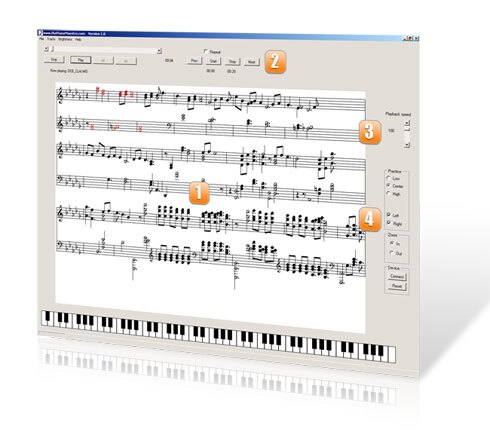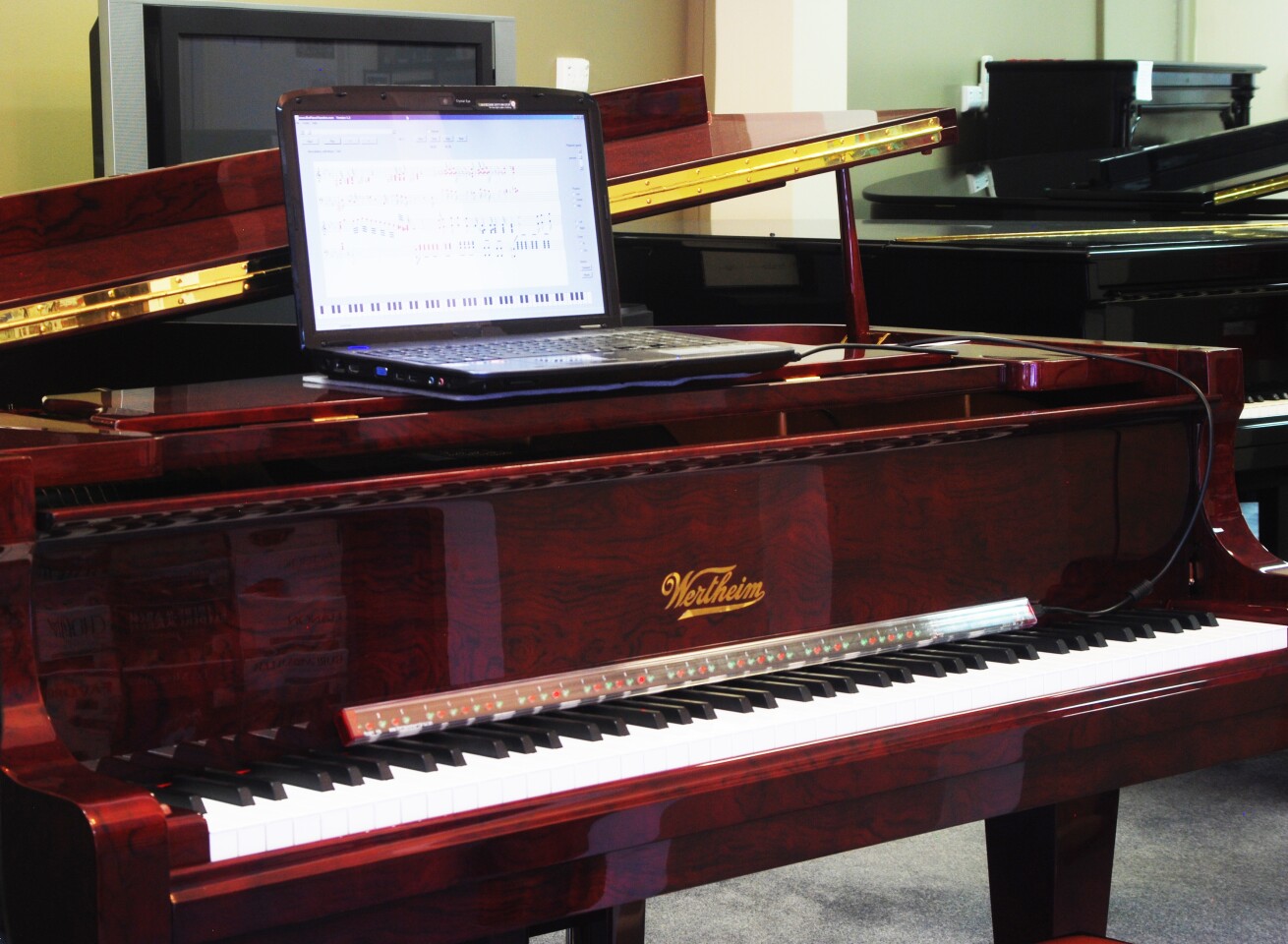Like many people, I once bought myself a digital piano and had every intention of teaching myself to play. However, when faced with a very steep learning curve and the prospect of spending weeks or months learning to play a simple prelude, such thoughts were soon put to bed and the instrument sat in the corner of the room gathering dust. Had I been able to place a PianoMaestro learning system on the keyboard, things could well have been different. PC software translates standard MIDI files into musical notation onscreen, the computer is attached by USB cable to a strip of lights, and that is placed at the back of a full piano keyboard, letting you know which keys need to be pressed when. The system is said to make the learning process quicker and easier and, according to its creator, is just like having your very own teacher with you all the time, but one who has "infinite patience that does not charge by the hour."
The PianoMaestro learning system was the result of New York-born Ken Ihara's own frustration at his progress in learning a piece of music. When he saw the huge cost involved in upgrading to a digital piano with built-in guide lights, he decided to put his electronics tinkering experience to good use and make his own. "I was amazed with how things have changed for the better in the last 10 years," he told Gizmag. "Because of the internet and available tools, I feel like making hardware can be a cottage industry again. Its like being in Silicon Valley in the late 70s."
"Electronics used to be an art – getting all the timings and different chips to talk to each other," says the Harvard University electrical engineering graduate. "Now it is one integrated chip and a ton of programming. The PianoMaestro was designed and built entirely in Melbourne [Australia] in the comfort of my home office/spare bedroom."

The PianoMaestro system consists of some Windows PC software that is able to read standard piano MIDI files and display the musical notes on a screen, and a strip of LED lights that's placed at the back of a piano's keyboard – on top of the black keys. The lights show the learner which notes need to be played and when. The user can chop songs into manageable chunks of one or two bars at a time, and passages can be repeated until the section has been nailed before moving onto the next part. The user is also able to adjust the speed – to start slow and then gently increase the tempo up to normal speed.
"There are literally millions of pianos collecting dust in homes everywhere – it's really sad," said Ihara. "It would be great if we could make these wonderful instruments sing again. With the PianoMaestro, I can learn the notes of an unfamiliar piece in less time. That enables me to spend more valuable lesson time with my piano teacher working on the artistry and interpretation of a piece."
As you may have gathered by now, you need to already own a piano – one with an octave span of exactly 164mm (6.45-inches), along with a Windows notebook or suitably-positioned PC.

Ihara says that PianoMaestro is not intended to replace a good teacher. In fact, he recommends learning things like posture and hand position from a piano tutor so that progress-impeding bad habits can be avoided. His learning system is, however, claimed to help users to learn the right notes quicker and easier, and so motivate them to keep the dust from gathering on the keys.
The system is available now and carries a recommended retail of AU$229 (US$237), but is currently available for a good deal less as an introductory offer. Exercises for beginners are included, along with 250 compositions from composers like Beethoven, Tchaikovsky, Bach and Mozart. Users can also search online for MIDI songs and feed them into the software.
The PianoMaestro certainly looks to be a more convincing learning option than the Gigiway Piano and Violin Learning Pen and a whole lot more portable – and cheaper – than Concert Hands.
You could of course try to learn the instrument using a tablet or smartphone app, but we're betting that it won't be anywhere near as beneficial as learning on the real thing.








